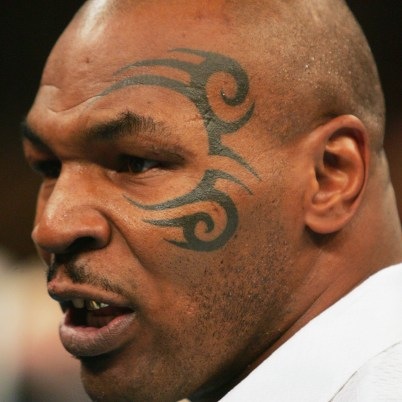


IN Zimbabwe and the world over, the young generation and fashion enthusiasts are embracing tattoos and it is not surprising that many are spotting the marks all over their bodies. Tattoos are markings made by inserting ink into the skin to change the pigment for decorative purposes, among other reasons.
The tattooing for art’s sake has become popular in the country with the sight of a tattoo on someone’s shoulder, hip or ankle becoming commonplace — they are now a social trend. Though practiced at a low level locally in the past, the practice has been alive in certain parts of the world since time immemorial.
There are two types of tattoos — permanent and temporary. The former requires a minor operation for one to be marked. These tattoos have various meanings and usually come in different shapes and sizes. A snappy survey by the Financial Gazette has indicated that some people wear tattoos primarily for cosmetic, sentimental or religious reasons. However, to some it is a form of art, while to others it is a source of living.
Michael Gutsa of Cranborne in Harare does not regret the day he set up a studio in his hood — which is commonly known for housing “coloureds” who are famous for their tattooed bodies. “I have been doing this for the past two decades and I have been leading a modest life. On a daily basis I make around US$70 depending on the number of people I would have drawn,” said Gutsa.
“The fact that I live in the “coloureds” community has made my life easy. They constitute the bulk of my clients.” Gutsa said the tattoo prizes depend on the size, shape and features of the marking. “The cheapest and simplest plain tattoo goes for US$25 and usually takes a few minutes to draw, but those with complicated features can take long and don’t usually come cheap,” she said.
“Some time people choose symbolic designs which might turn to be a mismatch later when its timeframe has expired,” she said. A tattoo enthusiast, Diana Davies, said there were different reasons why people get their bodies tattooed. “Tattoos have been preferred as a form of identification. I am of the lion (Shumba) totem and that is the reason why I had it drawn on my back,” she said. “I no longer need to tell people who I am. One can clearly identify me by merely looking at my body.”
Some women said they were embracing tattoos as a way of beautifying their bodies. “As a modern lady I could not do with a plain body no wonder I had my arms drawn to enhance my looks. I always get compliments when I walk in town because of these tattoos,” said Emmaculate Phiri of Westgate.
While tattoos have long served as fashion statements, some people are, however, now using them to warn others of their medical conditions. Some medical tattoos are being used to take the place of bracelets that commonly list a person’s allergies, chronic diseases or even end-of-life wishes.
A medical practitioner who requested anonymity said: “Bracelets are common medical indicators, but something as strong as a tattoo offers a simple and permanent way to send a strong statement about one’s medical condition of importance.” Observers attributed the popularity of tattoos in Zimbabwe to the compression of the world into a global village. While it is proving that there are many reasons as to why tattoos are becoming popular in Zimbabwe, peer-pressure tattoos are part of today’s popular culture forcing youths to open up to this new phenomenon.
Foreign performing artists — especially musicians — have also contributed to the popularity of tattoos. “The coming to Zimbabwe of popular musicians from western countries,’ has resulted in an influx of tattoo among locals who mimic their favourite artists,” said Drien Ncube of Masasa.
Tattoo artist, Irene Chiva, based at an upmarket saloon in Avondale said: “The process of tattooing does not take up much time owing to modern equipment that we now use. Usually we use an electric tattoo machine which comes with several needles. “Small tattoos, owing to technology can take less than five minutes to be completed, but larger and more complex tattoos with complicated designs and multiple pigments may need several sessions ranging over hours.”
However, she said this was different when traditional methods, which involved metallic needles and pigments that are inserted into the skin were employed. Dyes and pigments used in tattoos include inorganic materials like titanium dioxide, iron oxides and dyes or their mixtures.
Chiva, however, took a swipe at unfounded reports that tattooing can leave clients with contagious infections.
“Well-equipped tattoo studios use bio-hazard containers for objects that come into contact with blood or other body fluids, sharp objects and functional sterilising equipment. We usually open sterilised or disposable needles and equipment in the client’s presence to assure the later of safety standards.”
Historically, tattoos were considered an important aspect of pop culture and even of certain mafias. With these negative connotations, some religious people consider tattooing as a pagan or heathen activity. Some religious communities discourage tattooing citing the Old Testament book of Leviticus which says: “You shall not make any cuttings in your flesh for the dead, nor print any marks upon you: I am the Lord.” This creed against tattooing caused some people to shun.
In the United States of America tattooing is the sixth-fastest-growing retail business. The single fastest growing demographic group seeking tattoo services is middle-class suburban women. Tattooing is recognized by the United States government as both an art form and a profession. – Nkosana Zulu
newsdesk@fingaz.co.zw